The BIGGEST Reasons Why Revenue Cycle Management is Important
Whether you’re a part of a healthcare organization that’s starting to evaluate vendors to outsource this process to or you’re just trying to wrap your head around it, here’s why revenue cycle management (RCM) is so important.

Over 90% of patients felt surprised by a medical bill in 2019.
There could be many reasons why that statistic above exists. Yet, the main takeaway is that, outside of scheduling, waiting for the appointment and receiving treatment, the majority of patients don’t understand the inner workings of healthcare. They only understand the care side.
If you’re a medical professional, though, you know just how complicated the financial side of the process is before, during and after seeing just one single client. Of course, the “process” I’m referring to is professionally known within the industry as the revenue cycle.
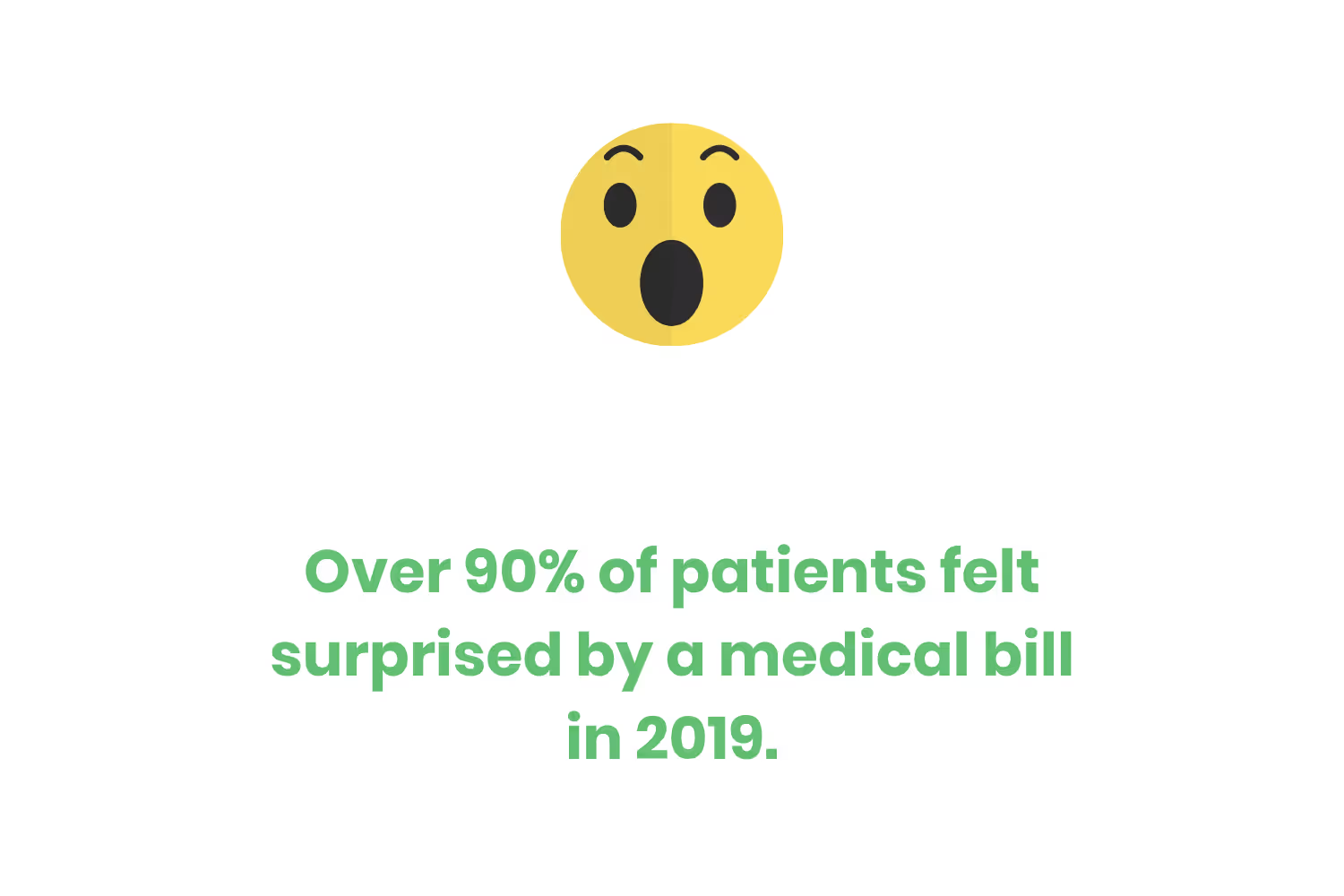
The process is arduous yet fickle. It starts the moment a patient calls a practice to seek treatment and ends with the full collection of any amount of money owed. The payment that goes to the practice comes from either the patient’s health insurance provider, their own bank account, or a mixture of both.
Since there are so many moving parts within this process, every step along the way has a massive impact on the success or failure of a practice.
So, whether you’re a part of a healthcare organization that’s starting to evaluate vendors to outsource this process to or you’re just trying to wrap your head around it, here’s why revenue cycle management (RCM) is so important.
Bridges The Business to Healthcare Gap
I touched on this point a little bit during the introduction. Even though healthcare deals with the treatment of those who are ill, they still need to collect revenue in order to keep their lights on.
That means that there’s an entire side of the medical industry that requires business knowledge. Of course, the responsibility of running an organization lands on its owner.
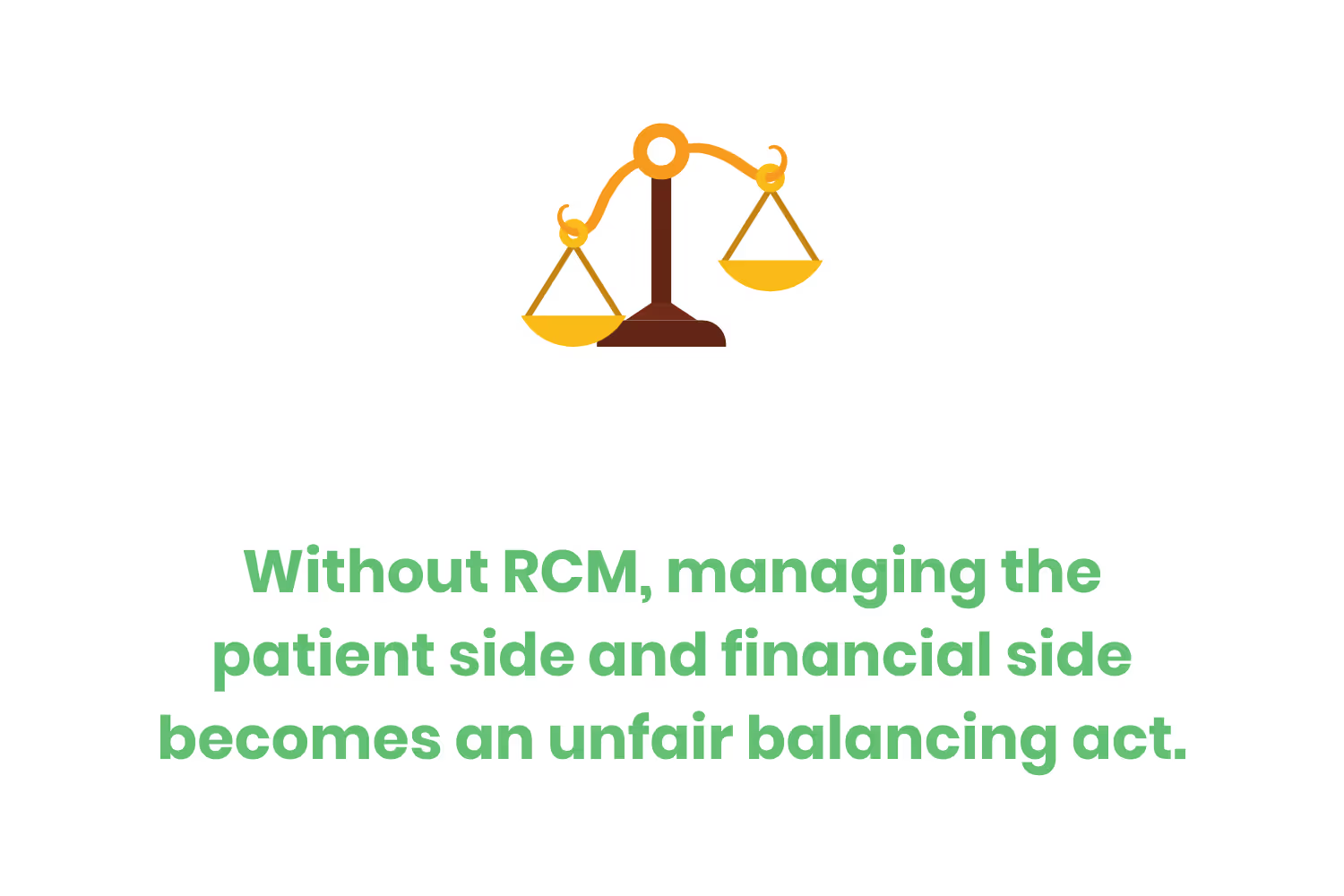
Unfortunately, the owner of a small to medium-sized practice is usually the head physician.
This means that not only does the head doctor have to see patients, he or she also has to deal with spreadsheets, taxes and revenue calculations.
With those two responsibilities alone, it’s no wonder that almost half of all physicians experience burnout.
In order to avoid a scenario where the owner of the practice considers quitting, a fully fleshed-out RCM environment needs to exist.
Eases The Administrative Tasks
One of the most obvious reasons why RCM is so important comes from the way that these solutions automate administrative tasks.
The leading RCM solution providers are so successful because they provide a system that not only helps them on the claim side but also helps them communicate with patients during every phase.
The first thing a patient does when they aren’t feeling well is contact their doctor to set up an appointment (assuming they didn’t try to self-diagnose themselves). The office administrator works with the patient to find a date that’s convenient and enters that information into their RCM system. From there, the system takes over and automatically sends over relevant information, insurance information requests and reminders.
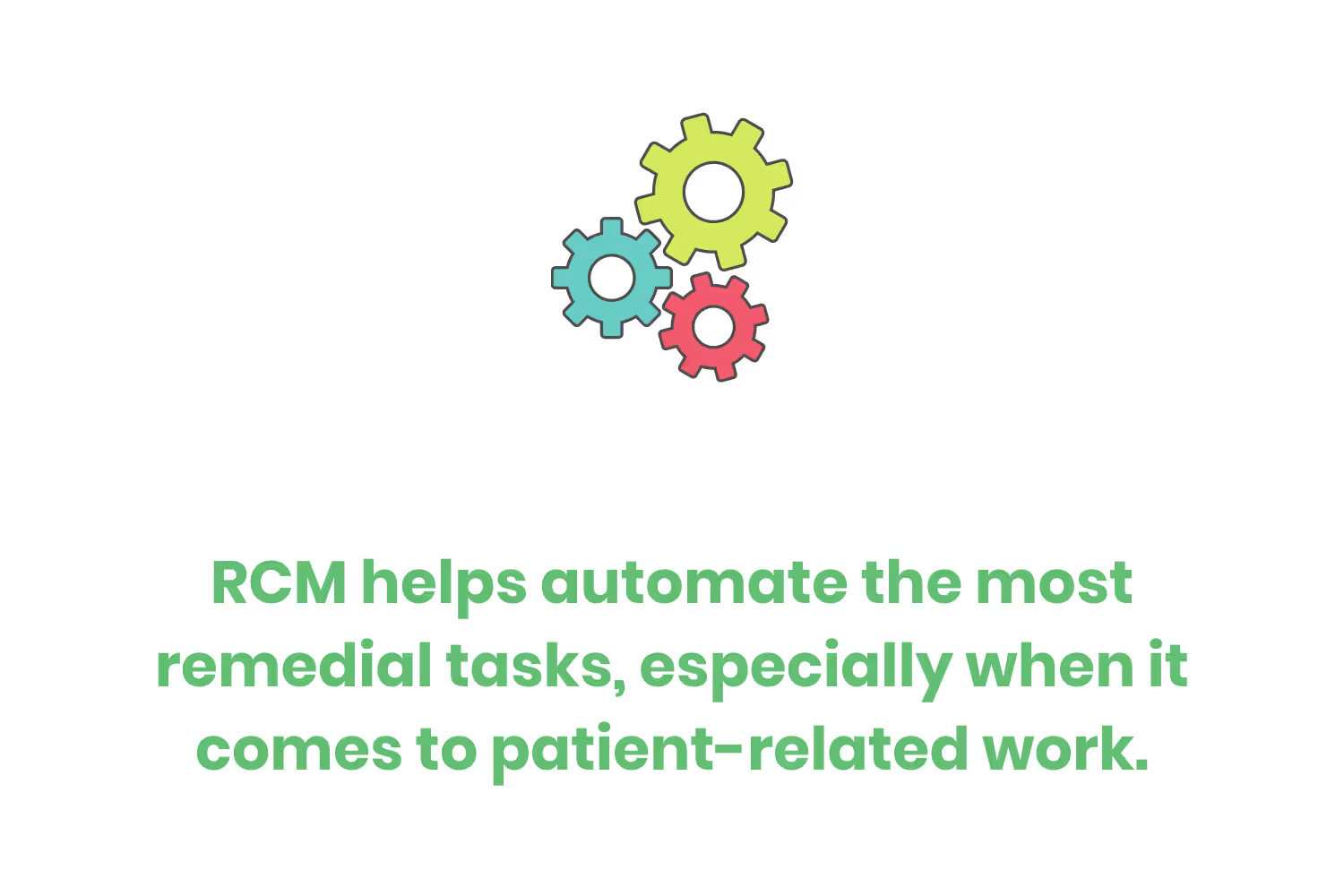
Although it would be great if that was where the administrative tasks start and end, there are many more that arise along the way.
Once the patient comes in and sits in your waiting room, it’s time to check with insurance to see whether or not they’ll cover the costs for the appointment. The industry calls this step checking eligibility.
In the past, it required cracking open a giant book provided by insurance companies and looking up the specific type of appointment and/or procedure. Today, all that’s required is for the office manager to enter in a patient’s information and the revenue cycle management system will provide an instant answer.
Tracks and Boosts Billing Cycles
After the appointment, it’s likely that your patients owe some sort of payment. Although collecting what your clients owe is one of the last steps in the revenue cycle, it’s also one of the hardest.
In fact, statistics show that it can cost twice as much to collect from a patient as it does from a payer.
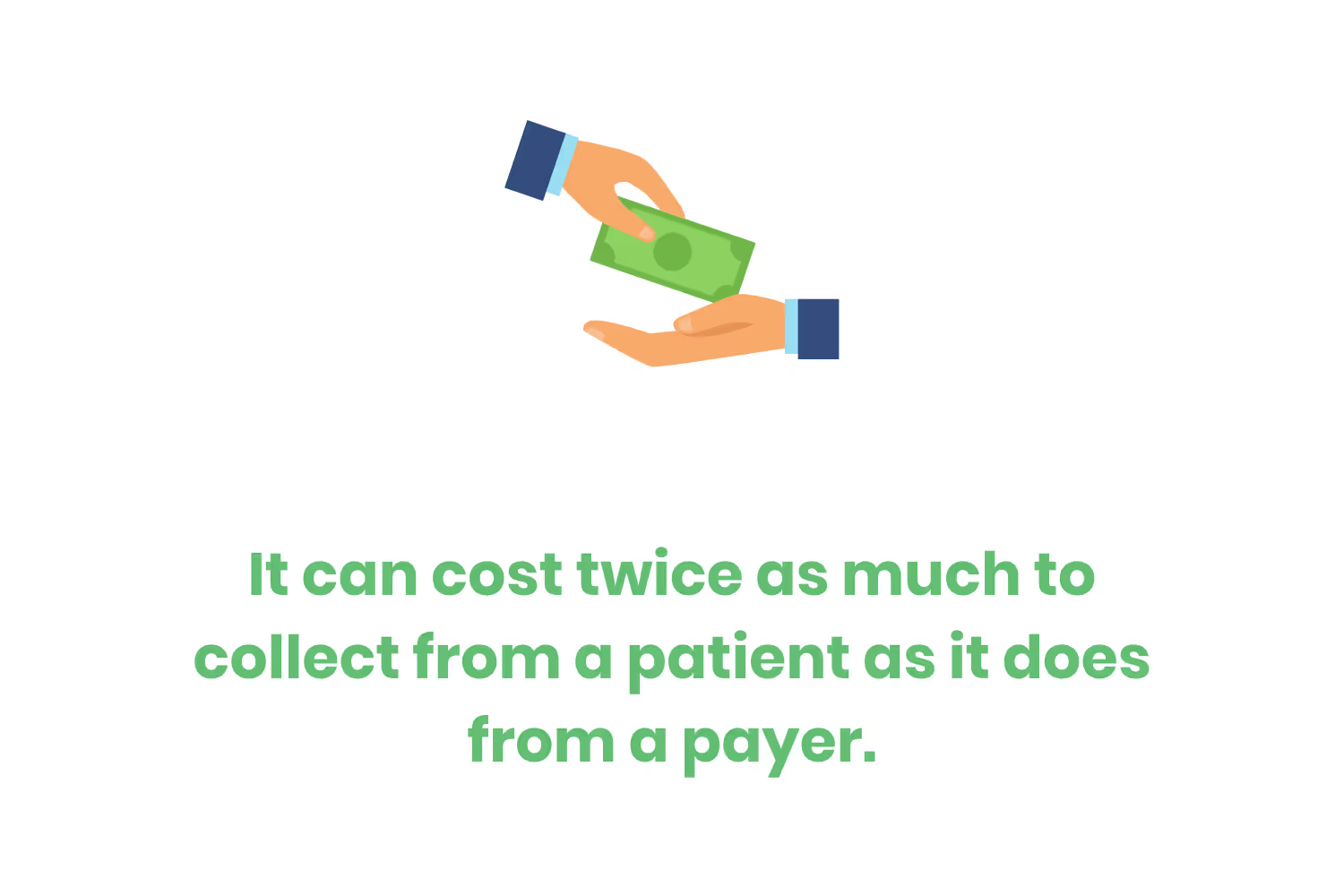
That doesn’t mean that collecting payments from patients is a lost cause. Thinking that way won’t make anything easier for you, either.
Full-stack RCM solutions usually offer a payment gateway that’s white-labeled for your practice. This gateways provides a virtual, secure and electronic place for your clients to check their balances and pay you directly.
Payment gateways are a newer feature to RCM solutions that appeared only about a decade ago. They’re the result of patients becoming more comfortable with paying their bills online. 72% of clients want e-statements for their medical statements.
Simplifies Claim Processing and Submission
So far, I’ve only touched on the patient side of revenue cycle management. Although communicating with patients and collecting their payment isn’t easy, it’s not the hardest part of the entire process.
Communicating back and forth with healthcare insurances requires patience, determination and industry know-how. You would think that insurance organizations would want to actively work together with doctors offices since they’re both working towards the same goal.
Yet, the reality is much more complicated and painful on the doctor than it is the insurance provider. Each of them requires doctor’s offices to parse and send their data in ANSI format.
That’s not that bad. However, it starts to get much more difficult when each insurance provider puts due dates on the lifetime of outstanding claims, more formally known as timely filing limits.
These deadlines aren’t a big deal when handling a handful of claims. However, it gets trickier in reality when every patient uses a different insurance provider and each of them has their own due date.
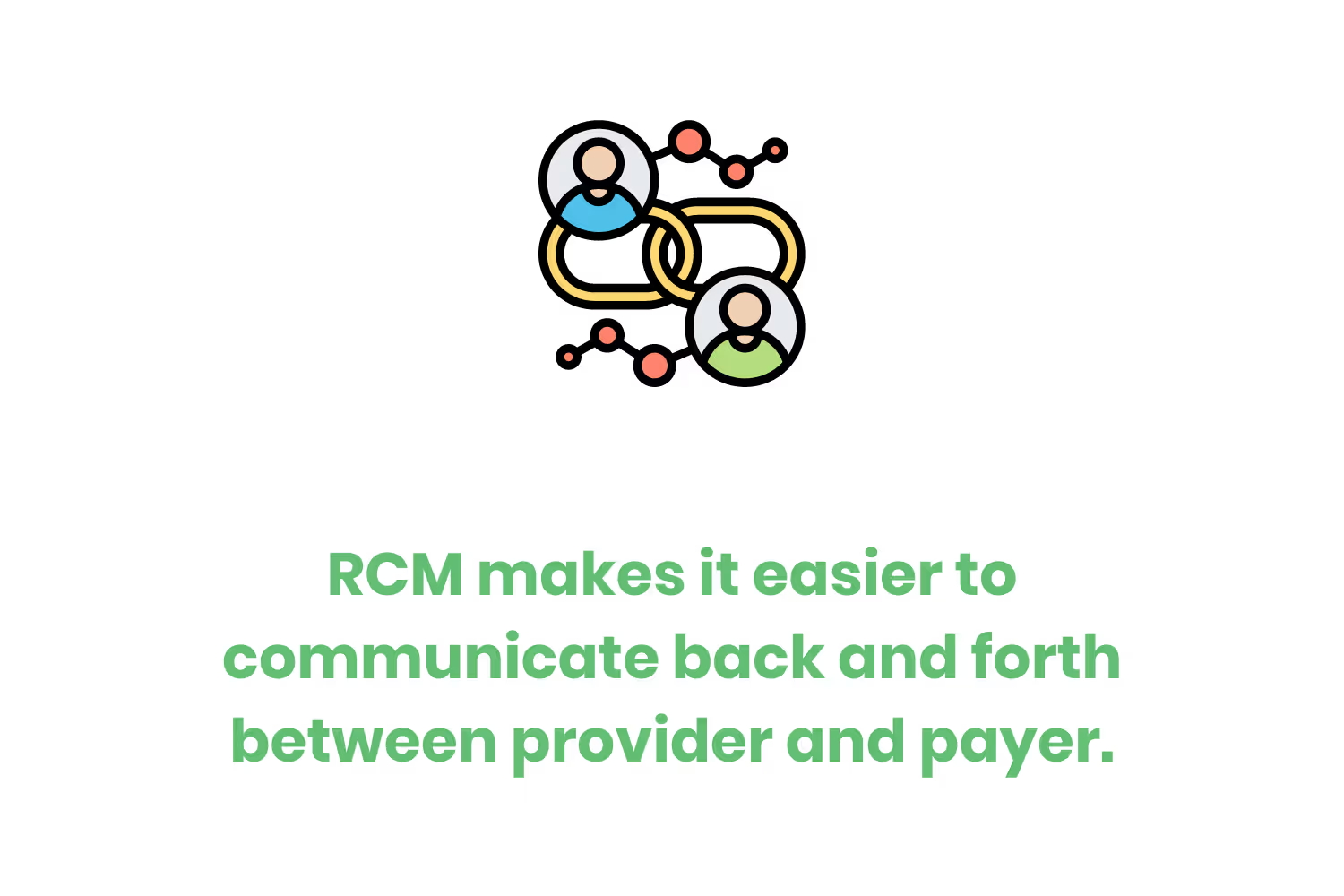
Timely filing limits are just the tip of the iceberg, though. There’s also a chance that submitted claims contain an error in them. When a claim contains an error in its information or formatting, it’s now considered a denial. The responsibility to fix the denied claim falls on the practice that submitted it.
The industry average denial rate falls between 5% and 10%. That’s actually pretty low considering the size of some of the hospitals and conglomerates.
When denials happen, practices can edit them and resubmit them to the insurance company. If they want to continue to pursue payment from their patient, they should do this. Yet, nearly 65% of all denials are never worked. That’s a lot of money left on the table.
Providing an all-in-one place to work through the tedious claim sending, denial management and scrubbing process makes it so much easier for healthcare organizations to get paid.
Allows For Reporting and Benchmarking
OK, although everything I’ve gone over in this blog post so far sounds like it’s a benefit, the only way of knowing that is by being able to track success.
Not only do the best revenue cycle management solutions provide report creation, but they should also provide customization options. Since there’s a lot of ambiguity throughout the RCM processes, these solutions should be able to tailor reporting to fit align with your practice.
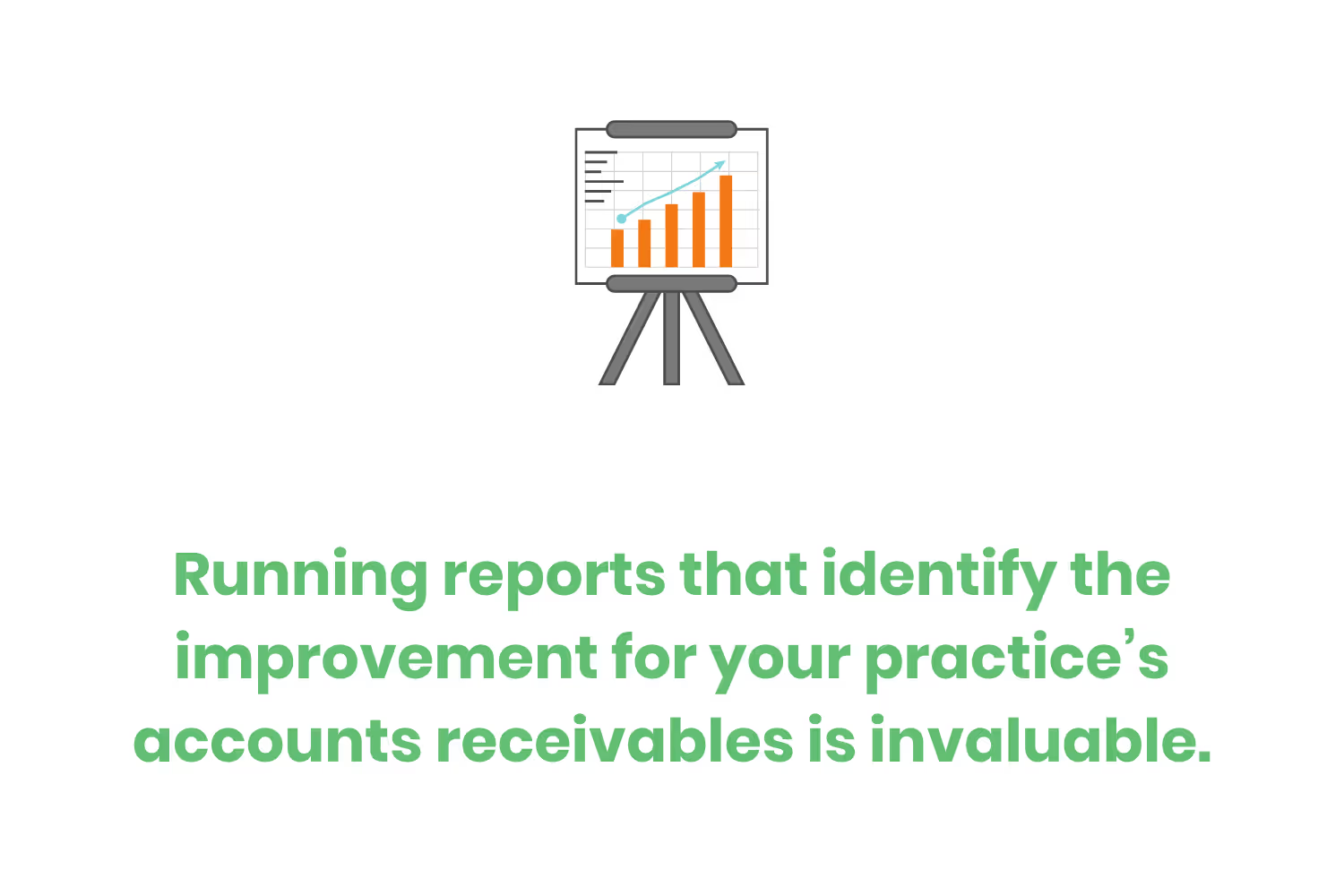
Running daily, weekly or monthly reports that identify the improvement for your practice’s accounts receivables is invaluable. You’ll be able to see where you were prior to placing a focus on your revenue cycle management and how much you’ve grown since.
Conclusion
If you’re a doctor or manager of a small physician practice, you can’t ignore the revenue cycle. It’s the side of healthcare that gets you paid. Without it, you wouldn’t have any option other than to close your doors.
Sure, it’s not as exciting as treating patients and I don’t expect you to be as passionate about it. Yet, you can’t ignore the financial side of your organization. And, without a proper revenue cycle management solution in place, the processes will take a lot of your time.
Emphasize your product's unique features or benefits to differentiate it from competitors
In nec dictum adipiscing pharetra enim etiam scelerisque dolor purus ipsum egestas cursus vulputate arcu egestas ut eu sed mollis consectetur mattis pharetra curabitur et maecenas in mattis fames consectetur ipsum quis risus mauris aliquam ornare nisl purus at ipsum nulla accumsan consectetur vestibulum suspendisse aliquam condimentum scelerisque lacinia pellentesque vestibulum condimentum turpis ligula pharetra dictum sapien facilisis sapien at sagittis et cursus congue.
- Pharetra curabitur et maecenas in mattis fames consectetur ipsum quis risus.
- Justo urna nisi auctor consequat consectetur dolor lectus blandit.
- Eget egestas volutpat lacinia vestibulum vitae mattis hendrerit.
- Ornare elit odio tellus orci bibendum dictum id sem congue enim amet diam.
Incorporate statistics or specific numbers to highlight the effectiveness or popularity of your offering
Convallis pellentesque ullamcorper sapien sed tristique fermentum proin amet quam tincidunt feugiat vitae neque quisque odio ut pellentesque ac mauris eget lectus. Pretium arcu turpis lacus sapien sit at eu sapien duis magna nunc nibh nam non ut nibh ultrices ultrices elementum egestas enim nisl sed cursus pellentesque sit dignissim enim euismod sit et convallis sed pelis viverra quam at nisl sit pharetra enim nisl nec vestibulum posuere in volutpat sed blandit neque risus.

Use time-sensitive language to encourage immediate action, such as "Limited Time Offer
Feugiat vitae neque quisque odio ut pellentesque ac mauris eget lectus. Pretium arcu turpis lacus sapien sit at eu sapien duis magna nunc nibh nam non ut nibh ultrices ultrices elementum egestas enim nisl sed cursus pellentesque sit dignissim enim euismod sit et convallis sed pelis viverra quam at nisl sit pharetra enim nisl nec vestibulum posuere in volutpat sed blandit neque risus.
- Pharetra curabitur et maecenas in mattis fames consectetur ipsum quis risus.
- Justo urna nisi auctor consequat consectetur dolor lectus blandit.
- Eget egestas volutpat lacinia vestibulum vitae mattis hendrerit.
- Ornare elit odio tellus orci bibendum dictum id sem congue enim amet diam.
Address customer pain points directly by showing how your product solves their problems
Feugiat vitae neque quisque odio ut pellentesque ac mauris eget lectus. Pretium arcu turpis lacus sapien sit at eu sapien duis magna nunc nibh nam non ut nibh ultrices ultrices elementum egestas enim nisl sed cursus pellentesque sit dignissim enim euismod sit et convallis sed pelis viverra quam at nisl sit pharetra enim nisl nec vestibulum posuere in volutpat sed blandit neque risus.
Vel etiam vel amet aenean eget in habitasse nunc duis tellus sem turpis risus aliquam ac volutpat tellus eu faucibus ullamcorper.
Tailor titles to your ideal customer segment using phrases like "Designed for Busy Professionals
Sed pretium id nibh id sit felis vitae volutpat volutpat adipiscing at sodales neque lectus mi phasellus commodo at elit suspendisse ornare faucibus lectus purus viverra in nec aliquet commodo et sed sed nisi tempor mi pellentesque arcu viverra pretium duis enim vulputate dignissim etiam ultrices vitae neque urna proin nibh diam turpis augue lacus.



![[ANSWERED] What is a Long-Term Care (LTC) Pharmacy](https://cdn.prod.website-files.com/67e2b8210878abcba6f91ae6/68d687806a075a1cf64659b0_WhatisLongTermCarePharmacy_925.avif)
